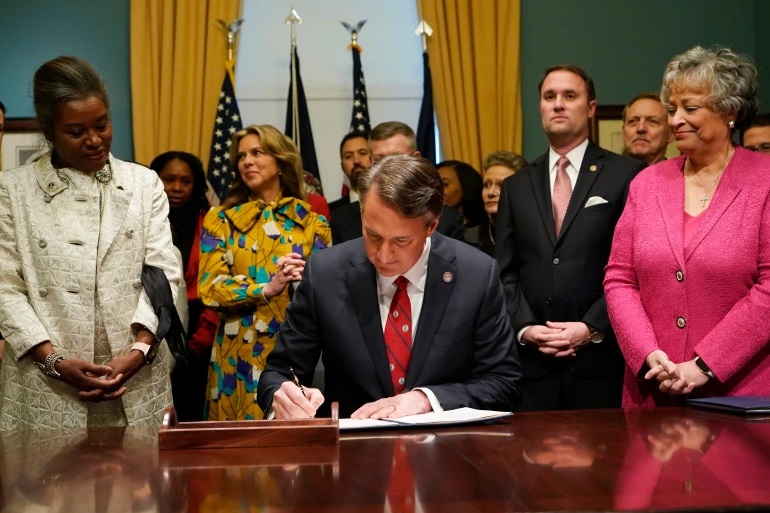
Overtly racist, sexist and queer-phobic books are filling the void left by bans on “critical race theory”.
As a District we remain committed to teaching love, inclusivity and compassion.” That was how the Northwest Local School District’s administration ended their statement in response to a racist incident in May at Colerain High School near Cincinnati, Ohio.
Some students had put up handwritten “Whites only” and “Blacks only” signs over two water fountains at the school, taken pictures of them and then posted them to social media for public consumption. “NWLSD stands firm in creating a culture of inclusivity, respect, kindness and compassion for everyone,” the administrators added.
Theirs is a statement any of the more than 14,000 school districts in the United States could issue. Yet how true can it be in Ohio, where in less than two years, Republican legislators have introduced three bills attempting to ban critical race theory and discussions of “divisive concepts” like the existence of LGBTQIA+ people? How can this be true when Forest Hills (another Cincinnati-area school district) postponed and then canceled its “Racial Diversity Awareness Day”, because some parents complained the event smacked of “critical race theory” and was “inherently divisive”?
How can this be true in a nation where nearly every week, racist incidents occur in school after school? Just in the past two months, a lesson plan at a Los Angeles K-8 school, which included picking cotton to learn about slavery, came to light in the midst of a lawsuit over the practice. So has a recent incident at a Massachusetts high school, where a white student posted a picture of himself with a sign that read: “If I was Black, I would be picking cotton. But I’m white, so I’m picking you for HoCo [Homecoming]”.
In fact, across the country, the backlash against anti-racist books and efforts that include The 1619 Project, has now paved the way for the return of overtly racist, sexist and queer-phobic books in schools, filling the void left by so many bans of “critical race theory”.
Those on the right pushing for these bans are really arguing against any schooling that involves a reckoning with American racism and other ills. The argument: Learning uncomfortable truths will lead to psychological damage in white students.
Never mind that Black, Brown, Indigenous and queer students – the majority of public school students – must continue to face erasure and daily trauma at the hands of callous politicians and educators and the hyper-masculine whiteness they practise and encourage.
The result of such bans is also a further undermining of confidence in public schools as a public good while bolstering privatisation and school choice efforts – pet priorities for the far right. Already, some Black parents have shifted to homeschooling in response to the trauma and erasure their kids have faced in recent years.
The US Supreme Court’s Espinoza v. Montana decision in 2020 has only made things worse. School tax dollars in states can now fund religious (mostly Christian) private and charter schools and their slants on patriotism, racism and queer rights. Curricula designed for places like Hillsdale College and affiliated religious charter schools already assert that “America is an exceptionally good country” and that queerness is a phase young people grow out of. One textbook in use at these schools describes kidnapped Africans as “Black immigrants”, as if people would voluntarily choose generational chattel slavery for their futures.
But the sad truth is that everyday racism in schools never went away. It is the same as it ever was.
The recent push towards curriculum myth-making began long before former President Donald Trump’s 1776 Commission called for more “patriotic education” in US schools. The past decade is replete with examples of attempts at propaganda through curriculum and textbooks. In school districts like Jefferson County, Colorado and states such as Texas, Tennessee and Idaho, installing more “patriotic” education while gutting discussions of slavery, racism, xenophobia, Islamophobia and homophobia have been going on for years. It is a deliberate erasure of Black, Mexican, Arab Muslim, Indigenous and queer senses of the world.
Look further back and you’ll find an evergreen history of politicians, educators and even journalists substituting belief and mythology for facts and difficult truths in US education.
In 1947, the Washington Post’s editors published an arrogant rebuke to concerns raised by the National Association for the Advancement of the Colored People (NAACP) and Black Washingtonian protesters over the racist trauma that the book, Little Black Sambo, caused in then-segregated DC public schools.
The US edition of Scottish author Helen Bannerman’s 1899 children’s book depicted African Americans as “step ‘n fetch it”, big-lipped, big-grinned, nappy-happy-go-lucky imbeciles. The word “Sambo” was once a well-used derogatory term on par with the N-word and “pickaninny”. Even worse, Little Black Sambo ended with the main character gleefully sitting down and devouring a stack of pancakes like Scooby-Doo. This was a turn-of-the-20th century racist stereotype, the equivalent of how many whites see Blacks when eating watermelon and fried chicken today.
The Washington Post editors could not “believe that the humorless touchiness reflected in these protests represents the attitude of Negroes in general” and accused the protesters of ’“damaging a good cause by pressing it to the point of absurdity”. Little Black Sambo, though banned for use in DC public schools in the 1950s, ultimately lingered in many other schools across the country through the 1960s.
It is this legacy of trauma, erasure and indignity for Black, Brown and queer students that today’s far-right politicians want to keep alive, through new legislation.
“We will make sure that parents can send their kids to school to get an education, not an indoctrination,” Florida Governor Ron DeSantis said as he signed off on Florida’s so-called “Don’t Say Gay” bill on March 28. The bill effectively bans LGBTQIA+-authored books and curricula about sexual orientation, gender identity, abuse and trauma from K-3 classroom instruction. In combination with the equally controversial “Individual Freedom” bill that passed in the Florida legislature in April, both have the effect of banning efforts at equity and inclusion in the state’s public schools.
Despite what DeSantis said, blanket bans on what can be taught are forms of indirect indoctrination. Erasure is itself propaganda – the notion that any K-12 education about the existence of Black, Brown and queer Americans beyond stereotypes and caricatures is evil.
These bans have already pushed at least one teacher in Florida to quit his job in August, after another employee removed pictures of famous African Americans from his classrooms. All because the employee believed them to be “age inappropriate”.
All these efforts in Florida and elsewhere in the US encourage educators to keep selling the lie of education as being about what makes white Americans feel good about themselves and the nation’s history. All this encourages white parents and students who find discomfort in anti-racism and queer-affirming efforts to gaslight and marginalise students of colour, as well as straight and queer students.
All because hypothetical Johns and Janes and their parents might get uncomfortable over the truth, about the history of exploitation, erasure and genocide that is as American as these attempts to deny, deflect and defend this history.

By Donald Earl Collins – Visiting Professor of African American History with Loyola University Maryland / Aljazeera




 World Opinions Débats De Société, Questions, Opinions et Tribunes.. La Voix Des Sans-Voix | Alternative Média
World Opinions Débats De Société, Questions, Opinions et Tribunes.. La Voix Des Sans-Voix | Alternative Média




